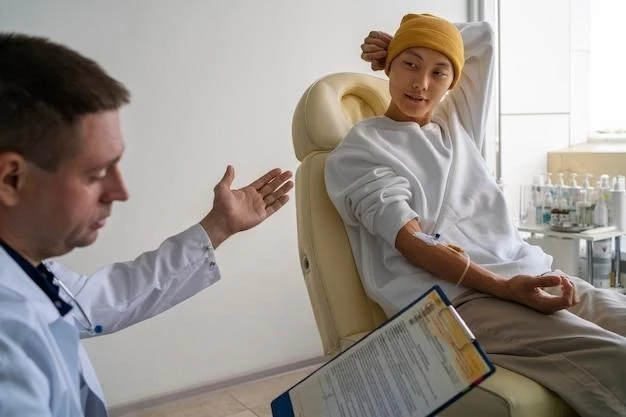Below you will find detailed information on Chondrosarcoma, including symptoms, diagnosis, treatment options, causes, survival rates, surgery expectations, recurrence prevention, research updates, and coping strategies.
Understanding Chondrosarcoma Symptoms and Diagnosis

Chondrosarcoma symptoms may include persistent bone pain, swelling, and a palpable lump. Diagnosis often involves imaging tests like X-rays, MRIs, and biopsies to confirm the presence of the tumor. It is crucial to consult with a specialist if you experience symptoms or have concerns about Chondrosarcoma.
- Bone Pain⁚ Unexplained and persistent bone pain, especially at night, can be a common symptom of Chondrosarcoma.
- Swelling⁚ Swelling in the affected area that does not resolve or keeps recurring should be evaluated by a healthcare provider.
- Lump Formation⁚ Feeling a lump or mass in the bone or soft tissue near a bone could indicate the presence of a Chondrosarcoma.
Early detection through recognizing these symptoms and seeking prompt medical attention is key to a successful treatment outcome. If you suspect Chondrosarcoma or have risk factors, such as a history of bone disorders, discuss your concerns with a healthcare professional immediately.
Treatment Options for Chondrosarcoma
When it comes to treating Chondrosarcoma, the approach may vary based on factors such as the tumor’s size, location, and grade. Common treatment options include⁚
- Surgery⁚ Surgery is often the primary treatment for Chondrosarcoma, aiming to remove the tumor while preserving healthy tissue.
- Radiation Therapy⁚ Radiation therapy may be used before or after surgery to target any remaining cancer cells.
- Chemotherapy⁚ While not always effective for Chondrosarcoma, certain chemotherapy drugs may be considered for advanced or metastatic cases.
- Targeted Therapy⁚ Targeted drugs that focus on specific molecules involved in cancer growth may be an option for some Chondrosarcoma cases.
It is essential to work closely with a multidisciplinary team of healthcare professionals, including oncologists and surgeons, to determine the best treatment plan for your specific situation. They will consider various factors to tailor a treatment strategy that offers the best possible outcome while minimizing side effects.
Understanding the Causes of Chondrosarcoma
While the precise cause of Chondrosarcoma is not always clear, several factors may contribute to its development⁚
- Genetic Predisposition⁚ In some cases, genetic conditions like multiple hereditary exostoses can increase the risk of Chondrosarcoma.
- Past Radiation Exposure⁚ Previous radiation therapy, especially during childhood, can be a risk factor for developing Chondrosarcoma later in life.
- Bone Disorders⁚ Certain bone conditions, such as Ollier’s disease or Maffucci syndrome, are linked to a higher likelihood of Chondrosarcoma.
Understanding these risk factors can help healthcare providers assess the potential for Chondrosarcoma in at-risk individuals. While the causes are not always preventable, early detection and prompt treatment are crucial in managing the condition effectively. Discuss any concerns about your risk factors with your healthcare team for personalized guidance and monitoring.
Chondrosarcoma Survival Rates and Prognosis
Survival rates and prognosis for Chondrosarcoma can vary based on factors like the tumor’s grade, size, location, and the patient’s overall health. Generally, the prognosis for low-grade Chondrosarcomas is more favorable than high-grade tumors.
Survival rates are often reported in terms of the 5-year survival rate, which indicates the percentage of people who survive at least five years after diagnosis. For localized Chondrosarcoma, the 5-year survival rate can be over 80%, while metastatic cases may have a lower survival rate.
It’s important to note that survival rates are statistical averages and do not predict individual outcomes. Your healthcare team will consider a variety of factors to provide a personalized prognosis and treatment plan. Regular follow-up appointments and monitoring can help track your response to treatment and adjust the plan as needed to optimize your long-term prognosis.
Surgery for Chondrosarcoma⁚ What to Expect
Undergoing surgery for Chondrosarcoma is a crucial step in treatment. Here’s what you can expect⁚
- Preparation⁚ Your healthcare team will provide detailed instructions on how to prepare for the surgery, which may include dietary restrictions and avoiding certain medications.
- Anesthesia⁚ You will receive anesthesia to ensure you are comfortable and pain-free during the procedure.
- Surgical Procedure⁚ The surgical team will work to remove the Chondrosarcoma while aiming to preserve surrounding healthy tissue and structures.
- Recovery⁚ After surgery, you will be monitored closely to manage pain, prevent complications, and support healing.
Recovery timelines can vary depending on the extent of the surgery and individual factors. It’s essential to follow post-operative instructions provided by your healthcare team, attend follow-up appointments, and communicate any concerns or changes in your condition. Surgery is often followed by additional treatments like radiation therapy to target any remaining cancer cells and reduce the risk of recurrence.
